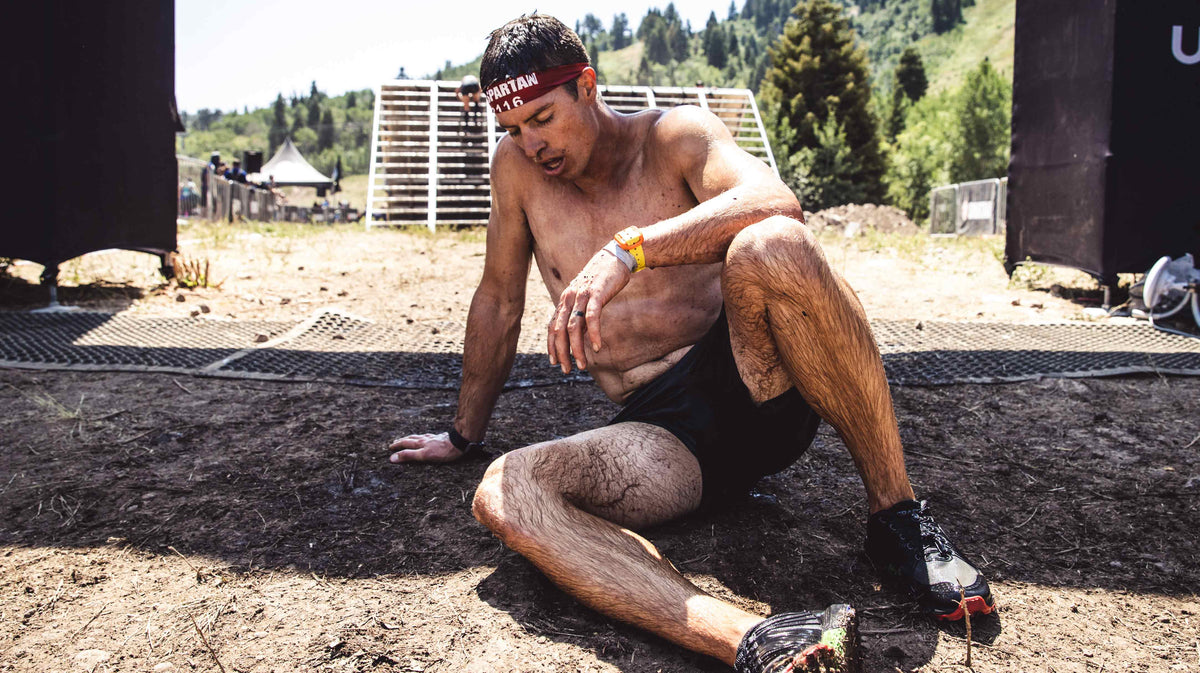Beyond Stretching: Recovery Methods to Bounce Back BETTER

While stretching post-workout is important for boosting muscle repair to prevent injury or pain from overuse, there are other ways to enhance recovery that may further benefit your muscles and ease tension. Stretching is always helpful, but there is only so much that you can do with it to get rid of soreness and loosen tightness after activity.
That’s where new, technology-based tools may come in handy. Not only will these different, innovative recovery hacks help prevent build up of tension — which could lead to chronic stiffness or injury — but the variety will also make sure that you’re hitting all the marks during your post-workout recovery routine.
Related: Your Post-Sprint Checklist: Exactly How to Eat, Stretch + Hydrate
Recovery is an integral part of working out to repair muscle tissue, which is broken down during a workout.
“These ‘microtears’ that form are a good thing, as it creates an inflammatory process at the site to allow for rebuilding and remodeling of the muscle,” Austin Martinez, MS, ATC, CSCS, and XPRO for StretchLab GO, says.
As you work out more consistently, muscles will adapt and become more fatigue-resistant. This process of rebuilding/remodeling the muscle is what most people refer to as "recovery.”
A good rule of thumb is: if you break the body down, then you also need to build it back up.
“The frequency of your recovery sessions should be directly correlated with the time and intensity of your workouts, meaning, the harder the workout, the more your body will need to recover,” Lee Braun, co-founder of Perspire Sauna Studios, says.
Here are a few options that trainers recommend to their clients to reduce risk of injury and pain.
Epsom Salts Bath or Magnesium Supplementation
“Researchers dispute its efficacy related to magnesium, as there is no clear conclusion that it has true physiological effects in promoting recovery; yet, it’s commonly thought that magnesium soaking into the skin can alter its chemical balance,” Martinez says.
The Epsom salts or magnesium will aid in repairing muscle damage and reducing soreness. Taking a bath with them post-workout can be a great way to reduce build up of tension and avoid injury.
Related: Magnesium Helps Tackle Stress and Muscle Cramps. Here's How.
“Epsom salts are generally done in warm to hot water, and this will relax muscle tissues, decreasing tension,” Martinez says.
Feel free to add in a soothing playlist and light candles to set the mood — it’ll be like a spa oasis. If you don’t want the bath, you can also take magnesium supplements or tablets — those will work just as well.
Infrared Sauna
Infrared saunas act in the same way as traditional saunas, but they use lamps that emit infrared lights instead of heated air.
“Because it doesn't create humidity, this allows for many benefits compared to a traditional sauna, such as a more tolerable environment and more direct heating, which can lead to deeper penetration of heat,” Martinez says.

Generally, the temperature does not need to be as high to receive similar benefits of a traditional sauna, which often include relaxation of muscle tissues, enhanced circulation, and better sleep.
Related: Your 7-Day Healthy Ritual: The One-Week Plan to Sleep Better
“Infrared saunas warm your core temperature safely two to three degrees, putting your body into a false fever state to kick your cardiovascular system into overdrive and increase your metabolism,” Braun says.
This passive recovery helps you burn calories and reduce inflammation, while allowing for a moment of tranquility and stillness post-workout.
“For best results, I recommend drinking 24 to 40 ounces of water throughout the session, so you exit the session totally refreshed,” Braun says.
This keeps your body hydrated and balanced.
Heat and Cooling Manipulation
Researchers debate whether cooling and heating temperature manipulation is effective, but it may be worth trying.
“The concept is that hot water dilates the blood vessels, promoting blood flow while cold water will constrict your blood vessels, causing blood flow to slow down significantly,” Martinez says. “So, going from a cold bath to a hot one and repeating for a few intervals will actively pump blood throughout the body."
Related: Extremes: Does an Ice Bath Work? The Sauna?
Increasing circulation to muscles is a key factor to improve recovery time, and it lowers inflammation.
“But so far, the research has not shown that this process of active blood pumping is occurring, or at least that it's not significant enough to make an individual report positive outcome,” Martinez says.
So, try it. But don’t be too surprised if it isn’t as beneficial as you’re hoping it’ll be.
CBD Topicals
CBD is short for “cannabidiol” and when it enters the body (such as in topical form like a cream or oil), receptors activate specific mechanisms that will lead to positive recovery aspects, such as decreased pain and inflammation. You can use a cream on specific areas that you worked that day, such as the thighs and calves, as well as the back and shoulder muscles. There is also a warming or cooling CBD option too, so you’re throwing in that hot and cold manipulation as well for an extra boost.
Related: 3 Things You Should Know About Taking CBD Before Exercise
“Each brand and type of CBD has their own list of instructions, so be sure to follow them," Martinez says. "While research is limited since CBD is still new, it is promising."
NormaTec and Compression Therapy
Think of compression therapy as if it were a mechanical massage — the device squeezes your skin and muscles, which — in theory — will promote blood flow and circulation.

“In your skin and muscles, you have different nerve endings that sense different types of stimuli (ex: heat, cold, compression, stretch, etc.), so when the specific receptors sense compression, their action is to force the muscle to relax,” Martinez says.
And of course, this leads to decreased tension and can prevent injury and strain.
Related: 5 Ways That Spartan+ Takes Your Racing Experience to the Next Level
You can find it at some recovery studios or gyms, or you can search for a unit online. Just be sure to follow each unit’s instructions for the best time intervals as recommendation (or ask a trainer for guidance, as they may be familiar and can help).
Beyond NormaTec, you can use compression gear, like socks or leggings, which can help reduce inflammation following a workout and enhance lymph drainage and circulation. You can find compression gear easily online from various retailers.

